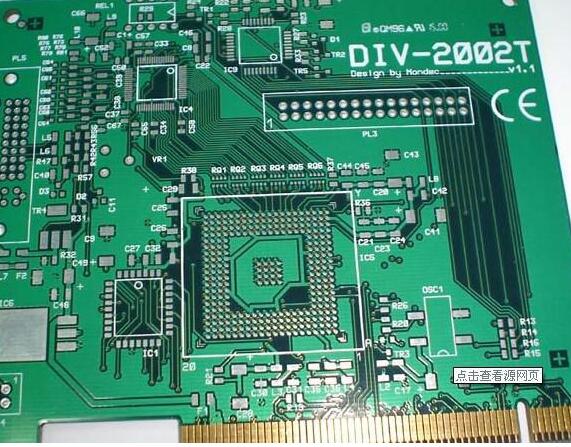Conventional requirements for PCBA outsourcing processing
total requirements:
1. In the outsourcing industry, insert or mount components in strict accordance with the bill of materials, PCB silk screen and outsourcing processing requirements. When the material does not match the bill, PCB silk screen, or contradicts the process requirements, or the requirements are ambiguous If you cannot work, you should contact our company in time to confirm the correctness of the materials and process requirements.
Second, anti-static requirements: should meet the general factory anti-static requirements. The following are the most basic requirements:
1. The anti-static system must have a reliable grounding device. The anti-static ground wire must not be connected to the power neutral wire or shared with the lightning protection ground wire.
2. All components are treated as electrostatic sensitive devices.
3. All personnel who come into contact with components and products wear anti-static clothes, anti-static bracelets, and anti-static shoes.
4. During the raw materials entering the factory and in the warehouse stage, the electrostatic sensitive devices are all anti-static packaging.
5. Warehouse management personnel should wear anti-static gloves when sending materials and IQC testing, use the meter to be grounded reliably, and the work surface is covered with anti-static rubber pads.
6. During the operation, use an anti-static work surface, and use anti-static containers for the components and semi-finished products.
7. The welding equipment is grounded reliably, and the electric soldering iron adopts anti-static type. All must be tested before use.
8. The semi-finished PCB board is stored and transported in an anti-static box, and the isolation material uses anti-static pearl cotton.
9. The whole machine without shell uses anti-static packaging bag.

10 The following regulations refer to the standard: PCB
1. Polarity components are inserted according to polarity.
2 times. When the components (not including the chip resistors) silk-printed on the top are inserted horizontally, the font direction is the same as the direction of the PCB screen printing; when inserted vertically, the upper side of the font faces right.
3. When the resistance is inserted horizontally, the error color ring faces to the right; when the resistance is inserted vertically, the error color ring faces down; when the resistance is inserted vertically, the error color ring faces the board.
Fourth, solder joints: SMD solder joints are described in the section "SMD Components", here refers to the solder joints of the plug-in components.
1. The pin height of the plug-in component on the soldering surface is 1.5~2.0mm.
2. The height of the solder joints: the height of the solder climbing pins should not be less than 1mm for the single-sided board, and the double-sided board should not be less than 0.5mm, and the tin must be penetrated.
3. Solder joint shape: Conical shape and covering the entire pad.
4. The surface of the solder joints: smooth, bright, no black spots, flux and other debris, no spikes, pits, pores, copper exposed and other defects.
5. Solder joint strength: fully wetted with pads and pins, no false soldering or false soldering.
6. Solder joint cross-section: the component's cutting foot should not be cut to the solder part as much as possible, and there should be no cracking on the contact surface between the lead and the solder. There are no spikes or barbs at the cross section.
V. Transportation: In order to prevent PCBA damage, the following packaging should be used during transportation:
1. Container: anti-static turnover box.
2. Isolation material: anti-static pearl cotton.
3. Placement spacing: there is a distance greater than 10mm between the PCB board and the board, and between the PCB board and the box.
4. Placement height: There is a space greater than 50mm from the top surface of the turnover box to ensure that the turnover box is not pressed against the power supply, especially the power supply of the wire.
6. Requirements for washing the board: The surface of the board should be clean, free of tin beads, component pins, and stains. Especially the solder joints on the plug-in surface should not be visible
Any dirt left by welding. The following devices should be protected when washing the board: wires, connecting terminals, relays, switches, polyester capacitors and other easily corrosive devices, and the relays are strictly prohibited to be cleaned by ultrasonic.
Seven, all components are not allowed to go beyond the edge of the PCB board after the installation is completed.
8. When PCBA passes the furnace, because the pins of the plug-in components are washed by the tin flow, some plug-in components will be tilted after being soldered by the furnace.
Oblique, causing the component body to exceed the silk screen frame, so the repair welding personnel after the tin furnace are required to make appropriate corrections.
1. The horizontal floating high-power resistor can be righted once, and the righting angle is not limited.
2. Horizontal floating height diodes (such as DO-201AD packaged diodes) or other components with a component pin diameter greater than 1.2mm,
It can be righted once, and the righting angle is less than 45°.
3. Vertical resistance, vertical diode, ceramic capacitor, vertical fuse, varistor, thermistor, semiconductor (TO-220,
TO-92, TO-247 packages), the bottom of the component body with a float height greater than 1mm can be centered once, and the righting angle is less than 45°; if the bottom of the component body floats with a height less than 1mm, the solder joints must be melted with a soldering iron and then corrected. Or replace with new devices.
4. Electrolytic capacitors, manganese copper wires, inductors with skeletons or epoxy board bases, transformers, in principle, are not allowed to be righted.
After the second soldering is done, if there is an inclination, it is required to use a soldering iron to melt the solder joints and then straighten them, or replace with new devices.